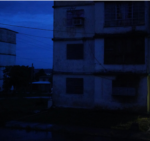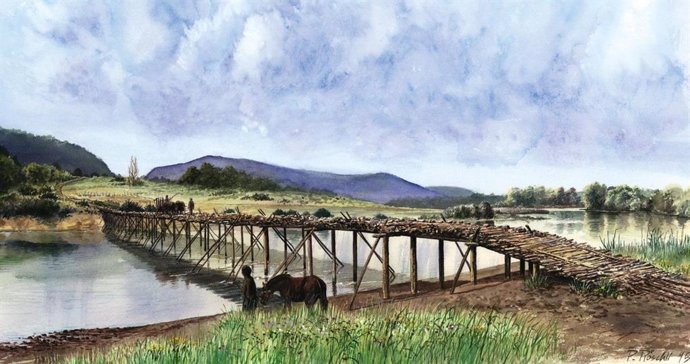Recreation of the Celtic bridge object of the study – LATÉNIUM – PARC ET MUSÉE D’ARCHÉOLOGY DE NEUCHÂT
June 17 () –
An accident and no sacrifices explains a deposit with human bones dating back 2,000 years, found near the ruins of a bridge in the Three Lakes region of Switzerland.
A pile of bones, skulls and wooden beams recovered from a river bed. What happened and who were the individuals found there? The ruins of the Celtic bridge at Cornaux/Les Sauges and the twenty skeletons found nearby have been the subject of speculation since its discovery in 1965 during the renovations of the Thielle Canal. Specialists in archaeology, anthropology, thanatology, biochemistry and genetics have once again studied the case. The conclusions of their study have just been published in the journal Scientific Reports.
SUDDEN ACCIDENT THEORY PREVAILS
This study is part of a joint international project carried out by the University of Bern and the Eurac Research Institute for Mummy Studies in Bolzano, which aims to improve the understanding of the Celts in Switzerland and northern Italy. The predominantly oral culture of the Celts has left few written sources, and much of what is available comes from the writings of Julius Caesar.
“These are the stories of a military adversary, so they are not necessarily objective or complete,” he says. it’s a statement Zita Laffranchi, postdoctoral researcher at the Institute of Forensic Medicine at the University of Bern. “By focusing on archaeological finds, we can give a voice to people who are not attested in the written record.” Together with her colleagues, she conducted bioarchaeological research to try to reconstruct the drama that once took place in Cornaux/Les Sauges.
The Celtic Bridge ruins and skeletons are, in fact, controversial. For some, a flash flood or large wave caused the wooden structure to collapse. For others, the corpses were victims of human sacrifice, an attested Celtic practice that is often associated with water.
The skeletons were examined from all angles to try to reconstruct the circumstances of the drama. Their state of preservation and the notable presence of brain fragments in five of the skulls suggest that the corpses were covered by sediment shortly after death. The remains preserve multiple bone lesions spread throughout the bodies, from the skulls to the legs. They appear to have been caused by a violent impact. No injuries were identified that could have been intentional or caused by sharp objects., unlike the analytical results in other European sites where sacrifices are attested. These elements, plus the fact that some of the bones were tangled with pieces of wood, point to an accidental event. The theory that a large wave caused the bridge to collapse therefore seems likely.
This is not the only information the skeletons have provided. Some of the bones and teeth have also been subjected to chemical analysis. Radiocarbon dating can provide a range of dates to understand when an individual lived, while other isotopic analyzes can provide information about victims’ diet and places of residence. Finally, paleogenetic analyzes allowed the research team analyze the ancient DNA of half of the individuals.
By making the bones “speak” in this way, scientists can confirm the presence of at least 20 people, with no apparent family link between them: a girl, two other boys and 17 adults, most of them young, and 15 of them appear to have been men. This clear demographic bias, with a strong majority of young adult men, could correspond to a group of prisoners or slaves who were sacrificed or to a convoy of merchants or soldiers. Finally, as some radiocarbon dating has proven ambiguous, it is impossible to be sure that all the deaths occurred at the same time and that they coincided with the destruction of the bridge.
“Taking all these elements into account, It is very likely that a violent and sudden accident occurred in Cornaux“summarizes Marco Milella, researcher at the University of Bern and co-director of this project. “But this bridge had a previous life. It may have been a place of sacrifice, and it is conceivable that some corpses preceded the accident. “There is no reason to choose between the two alternatives.”
THE CELTIC TRIBE OF THE HELVETICS
The exact sequence of events at the Cornaux/Les Sauges Celtic Bridge will probably remain a mystery. “In this type of research, we are interested in individuals. We track their life stories, which can be emotional,” explains Zita Laffranchi. “But ultimately, the goal is to better understand our cultural and biological heritage, at the population level.”
In the heart of Celtic Europe the Three Lakes region was important to the Celts, especially the Helvetians (Helvetii), the largest Celtic tribe that settled in the area between Lake Geneva and Lake Constance.











![[Img #74136]](https://thelatestnews.world/wp-content/uploads/2024/10/Life-associated-with-ice-on-Mars-300x200.jpg)
Add Comment